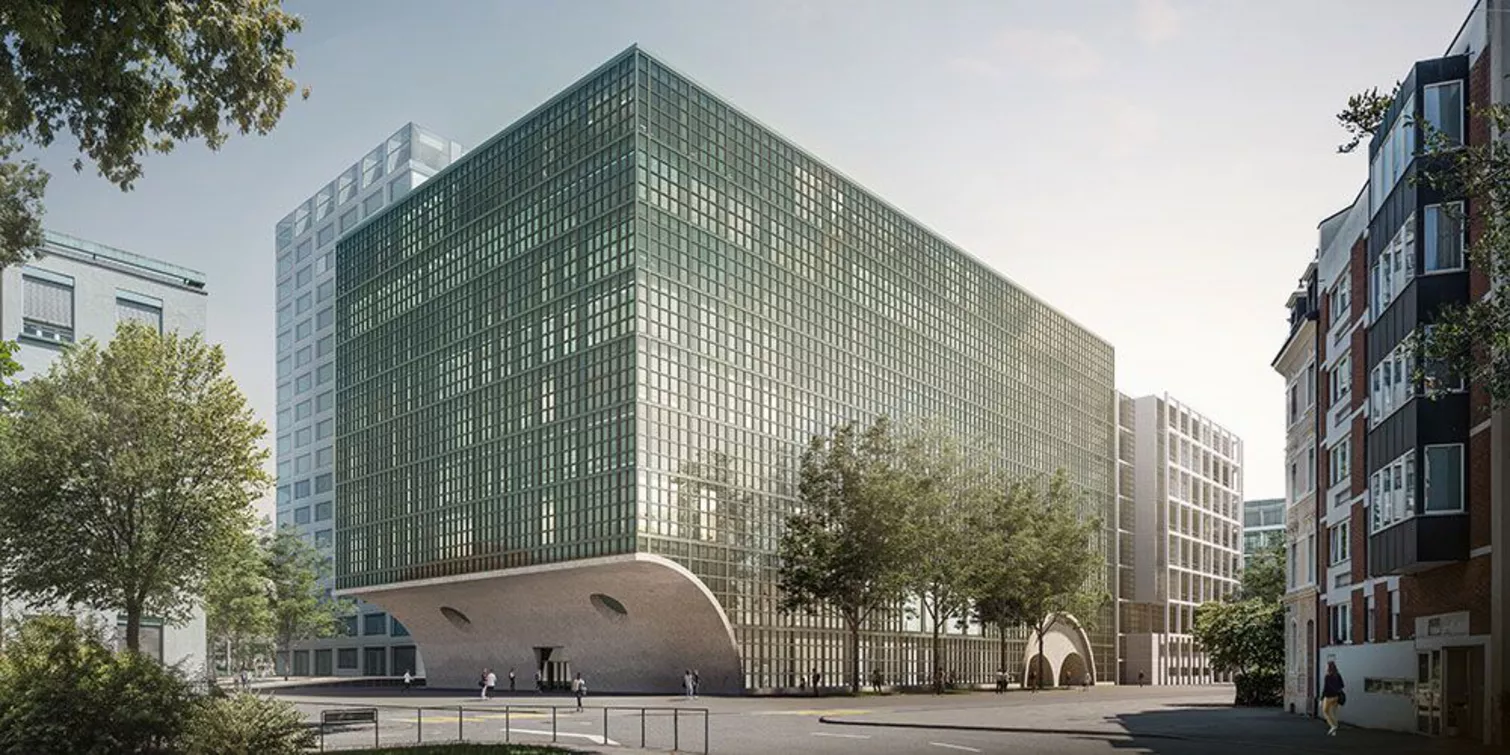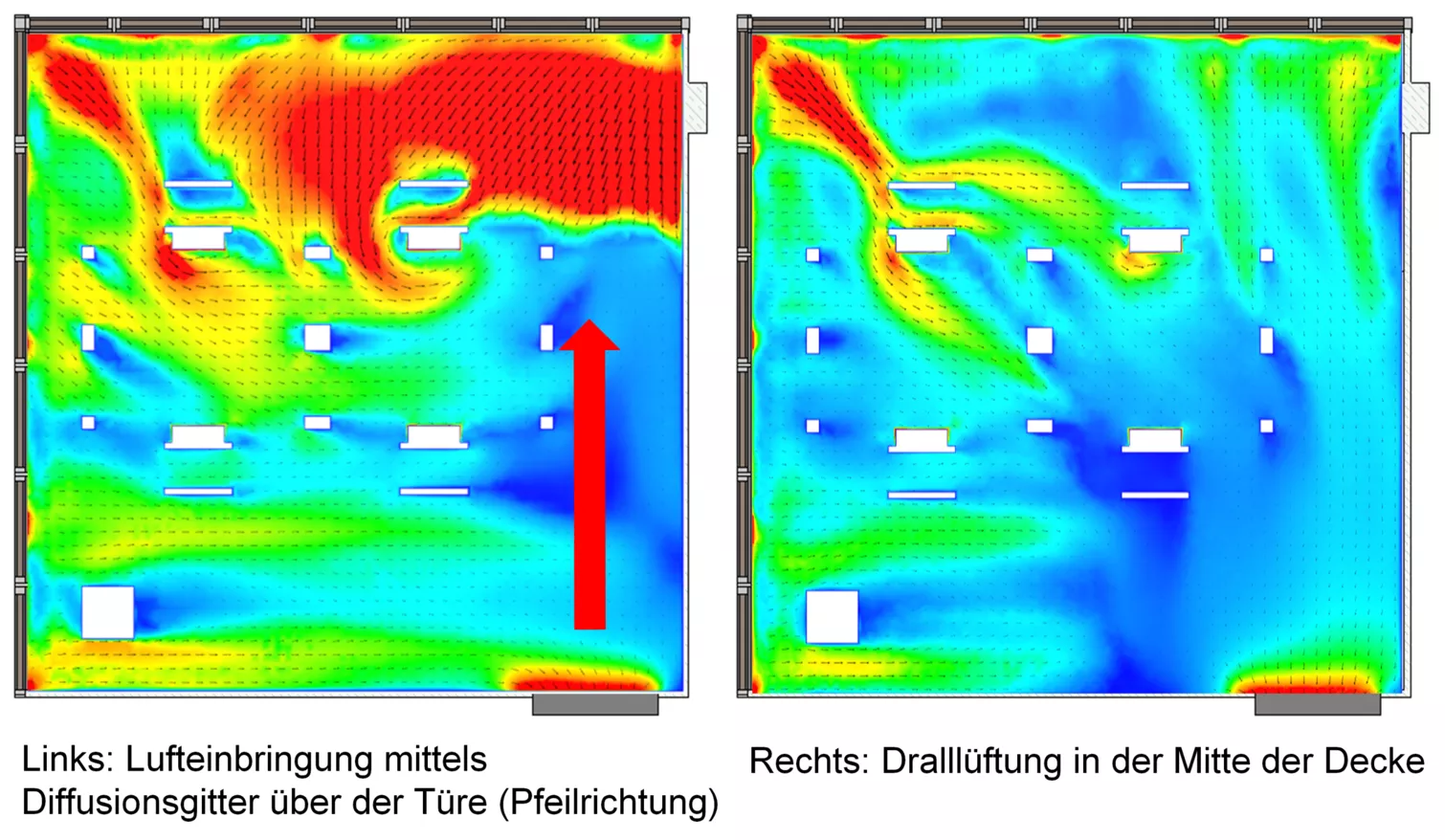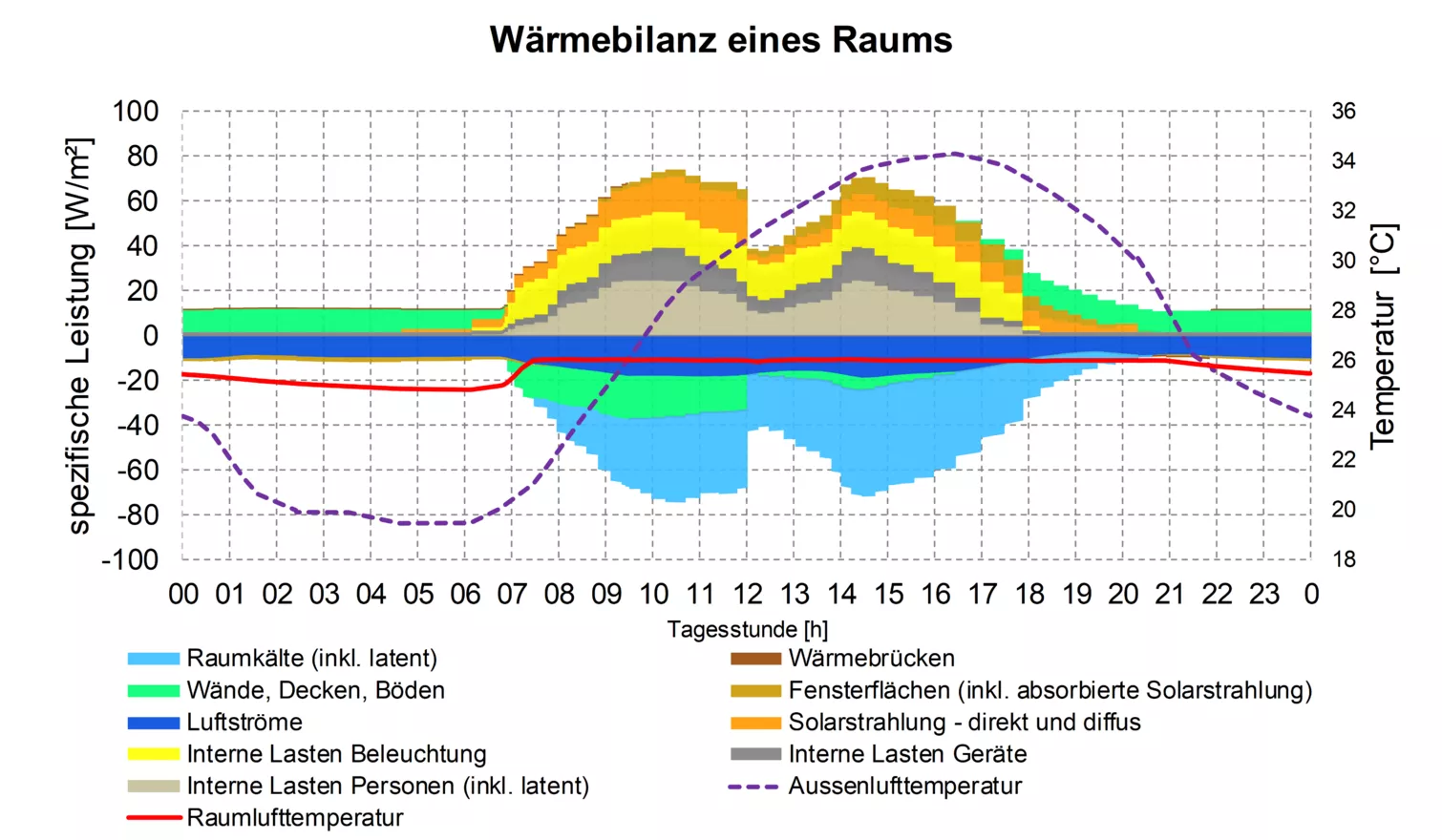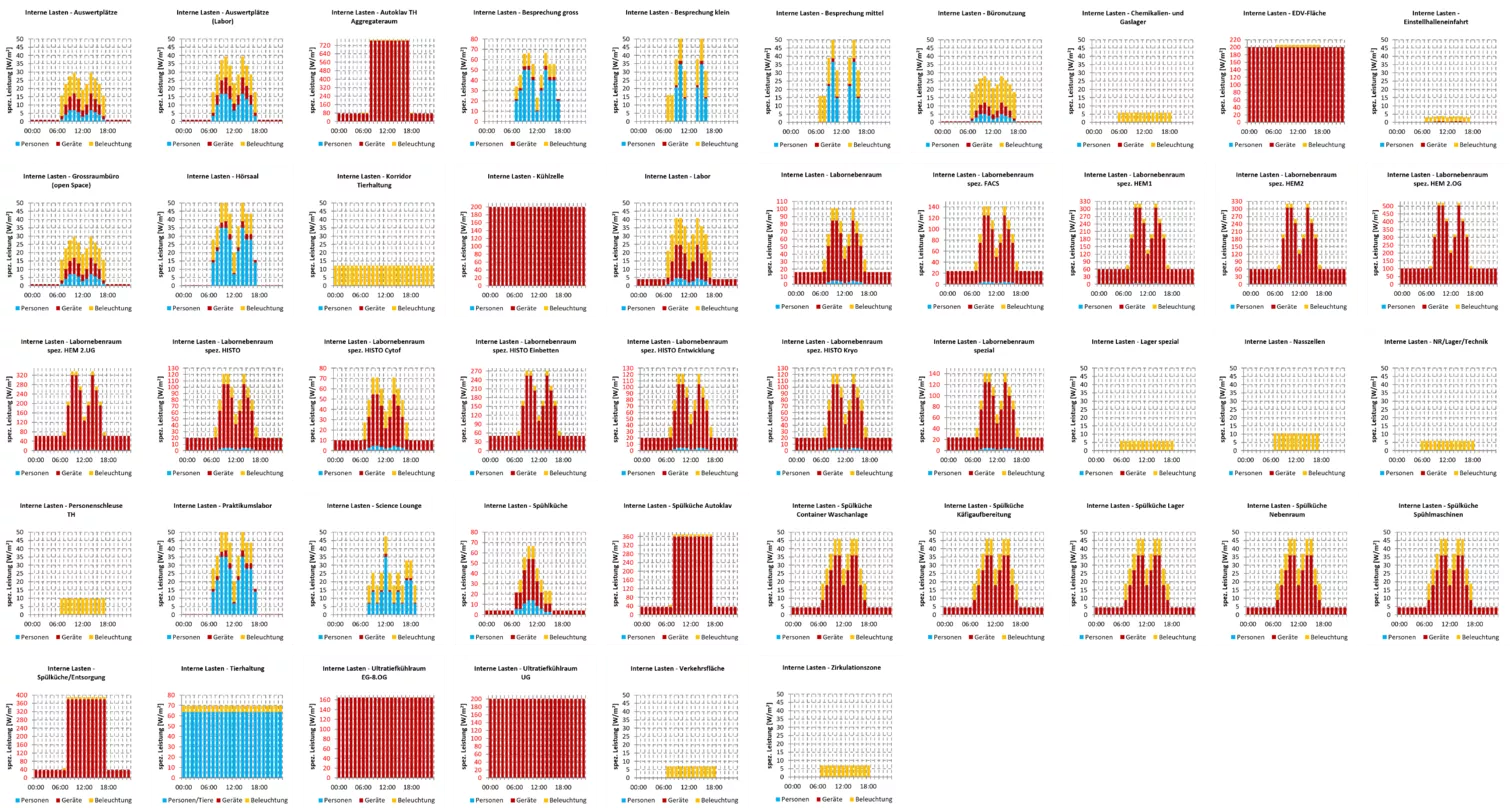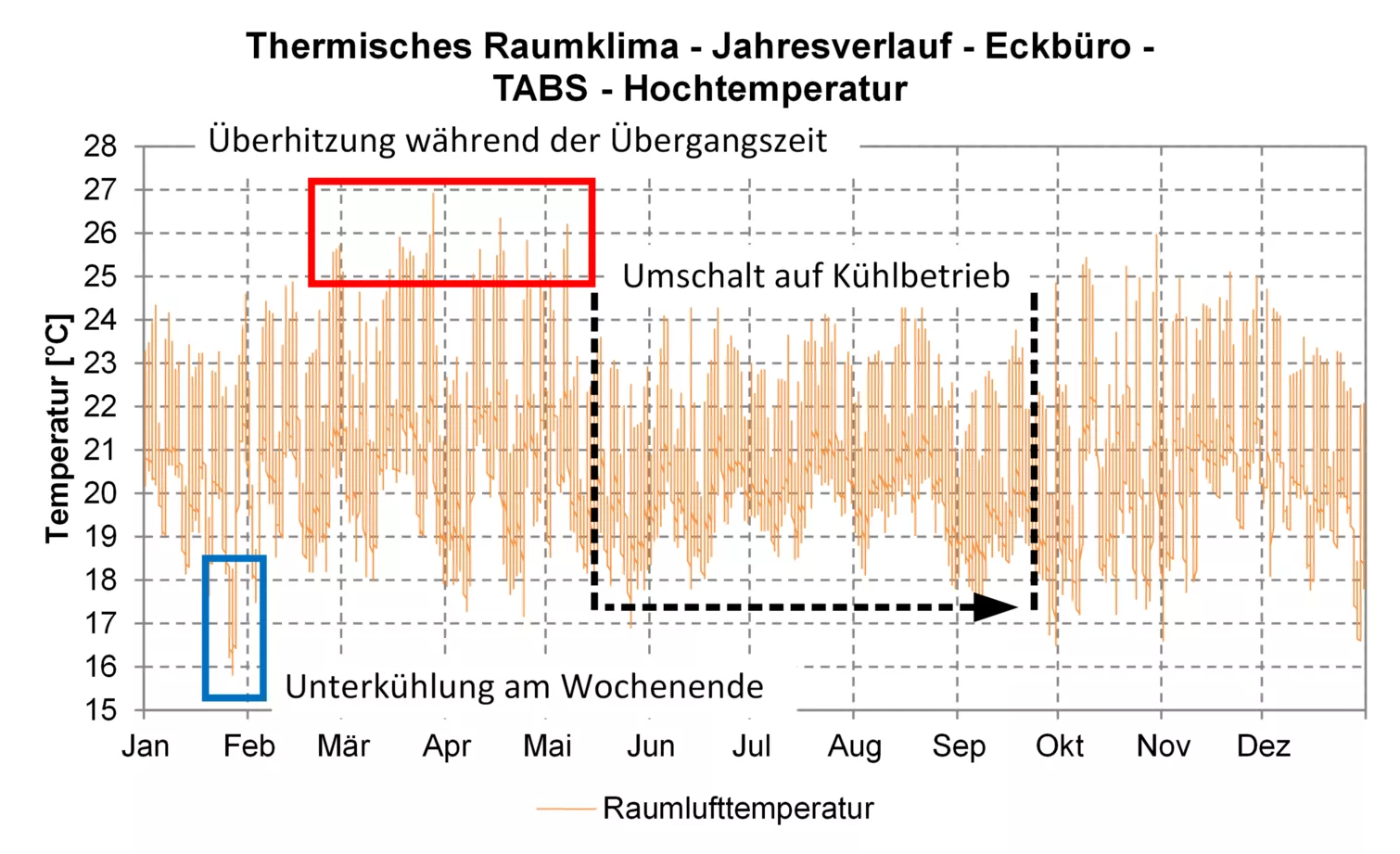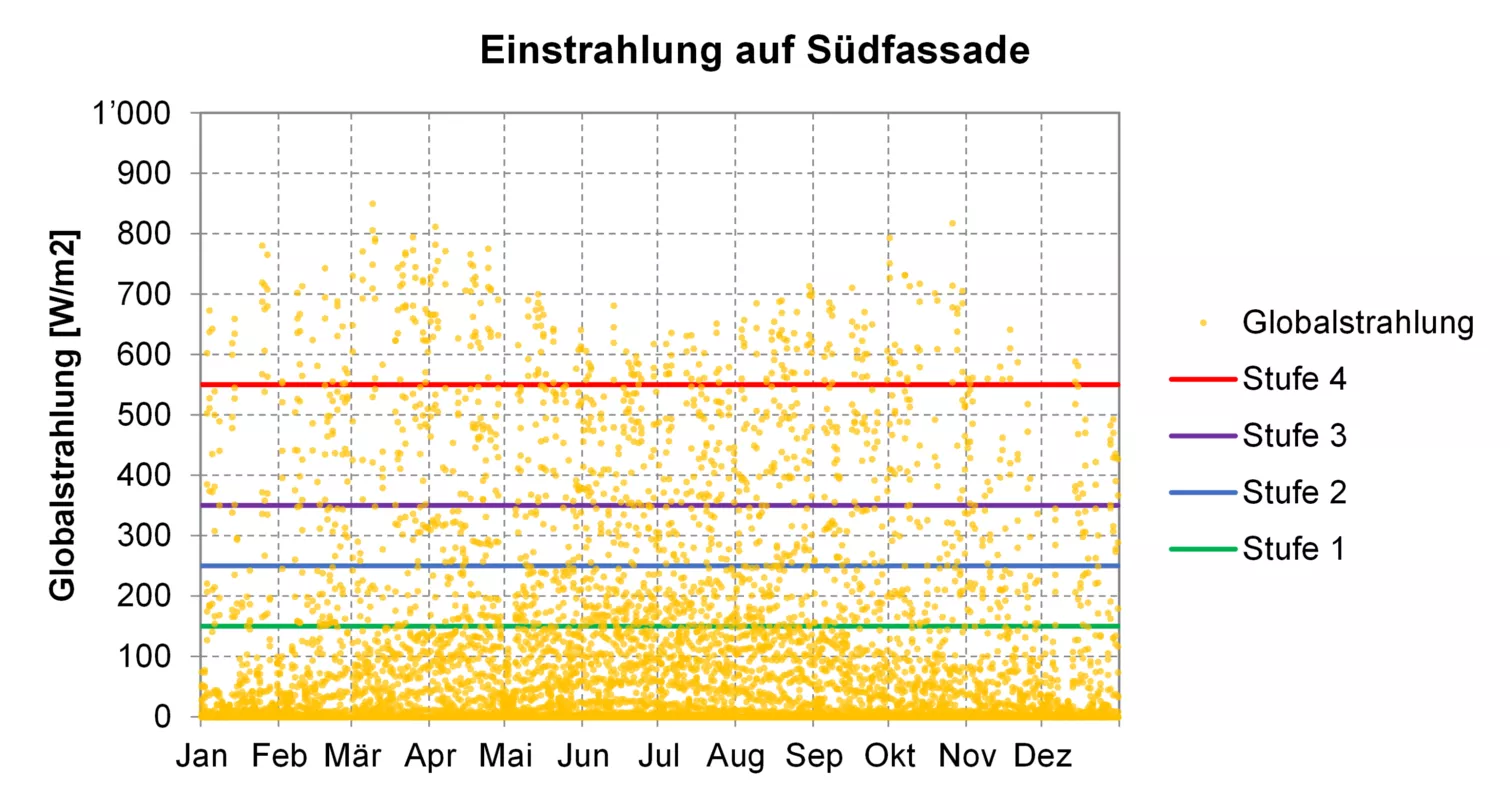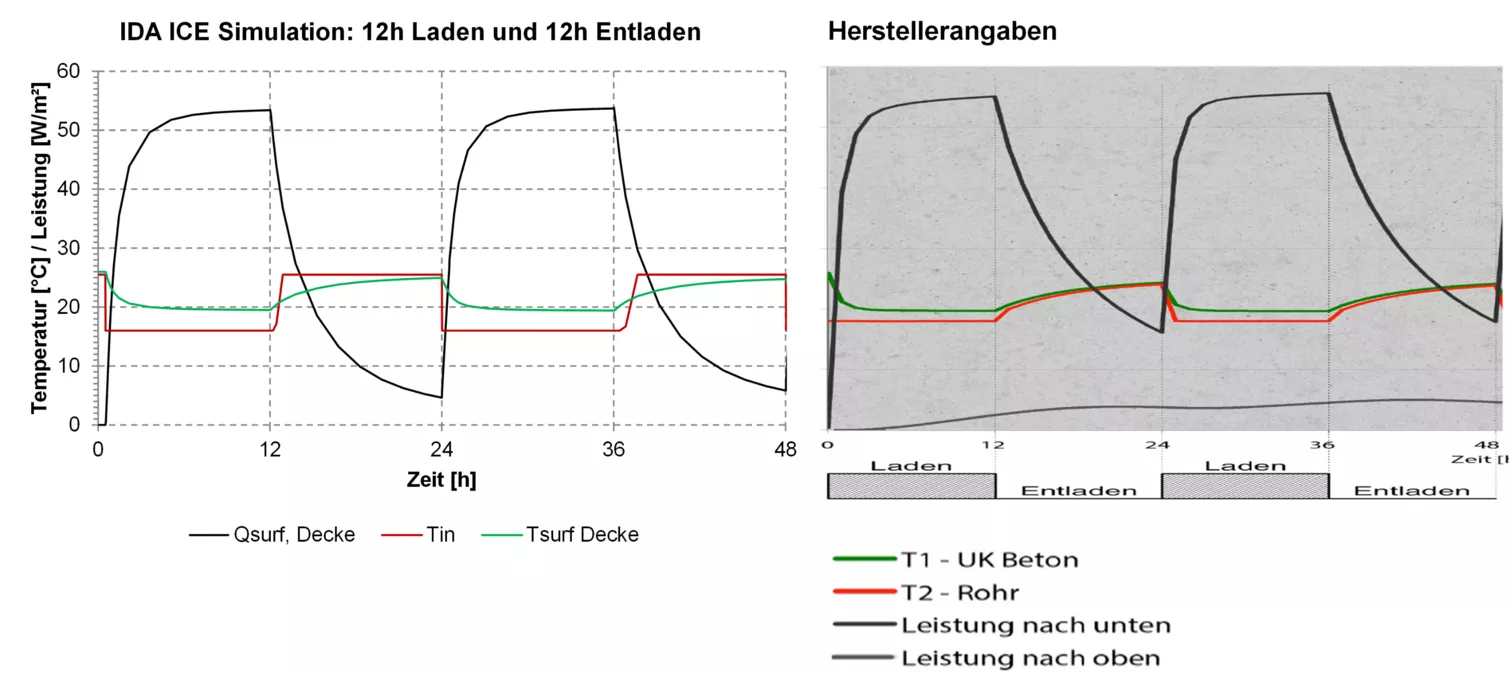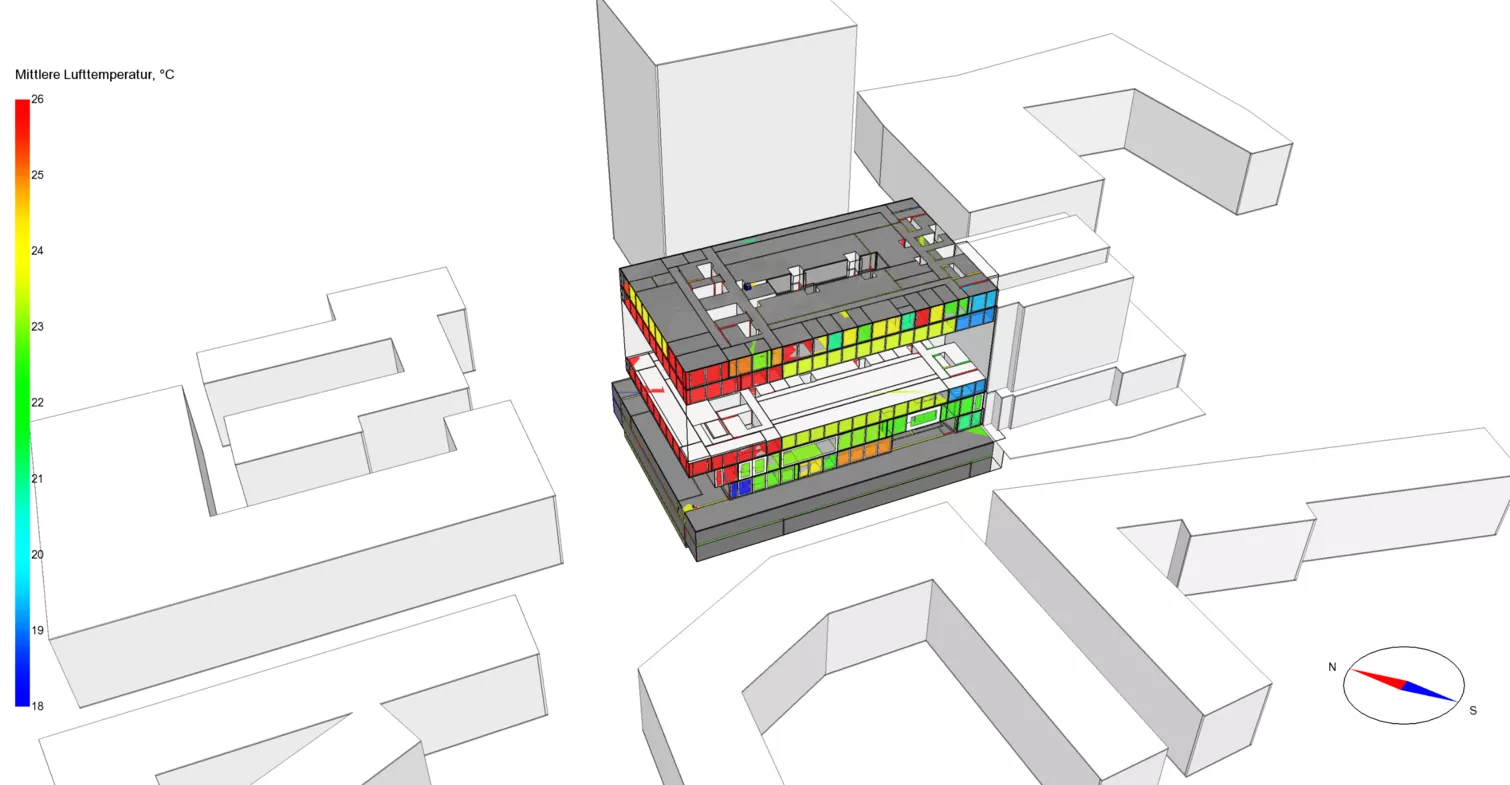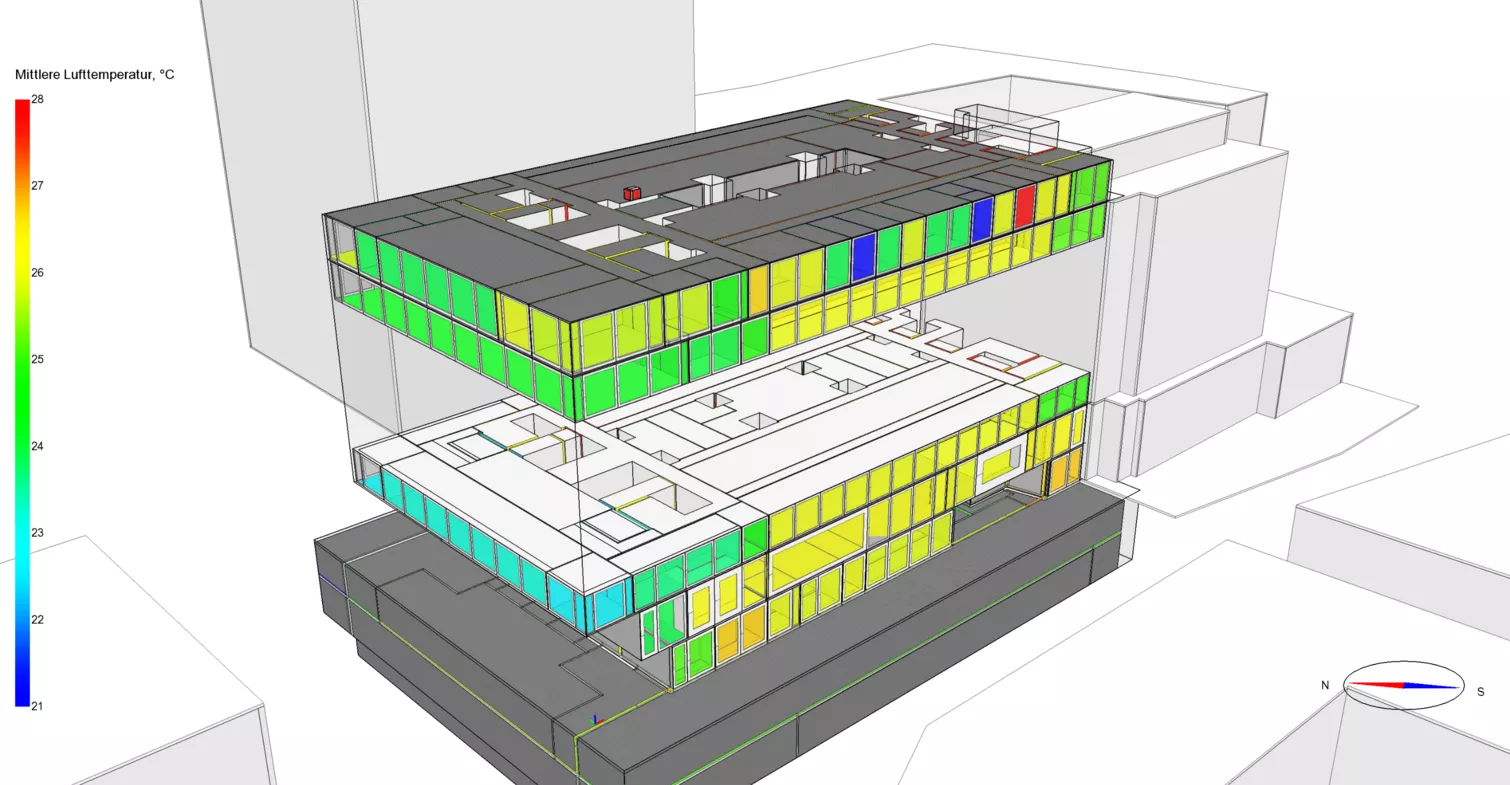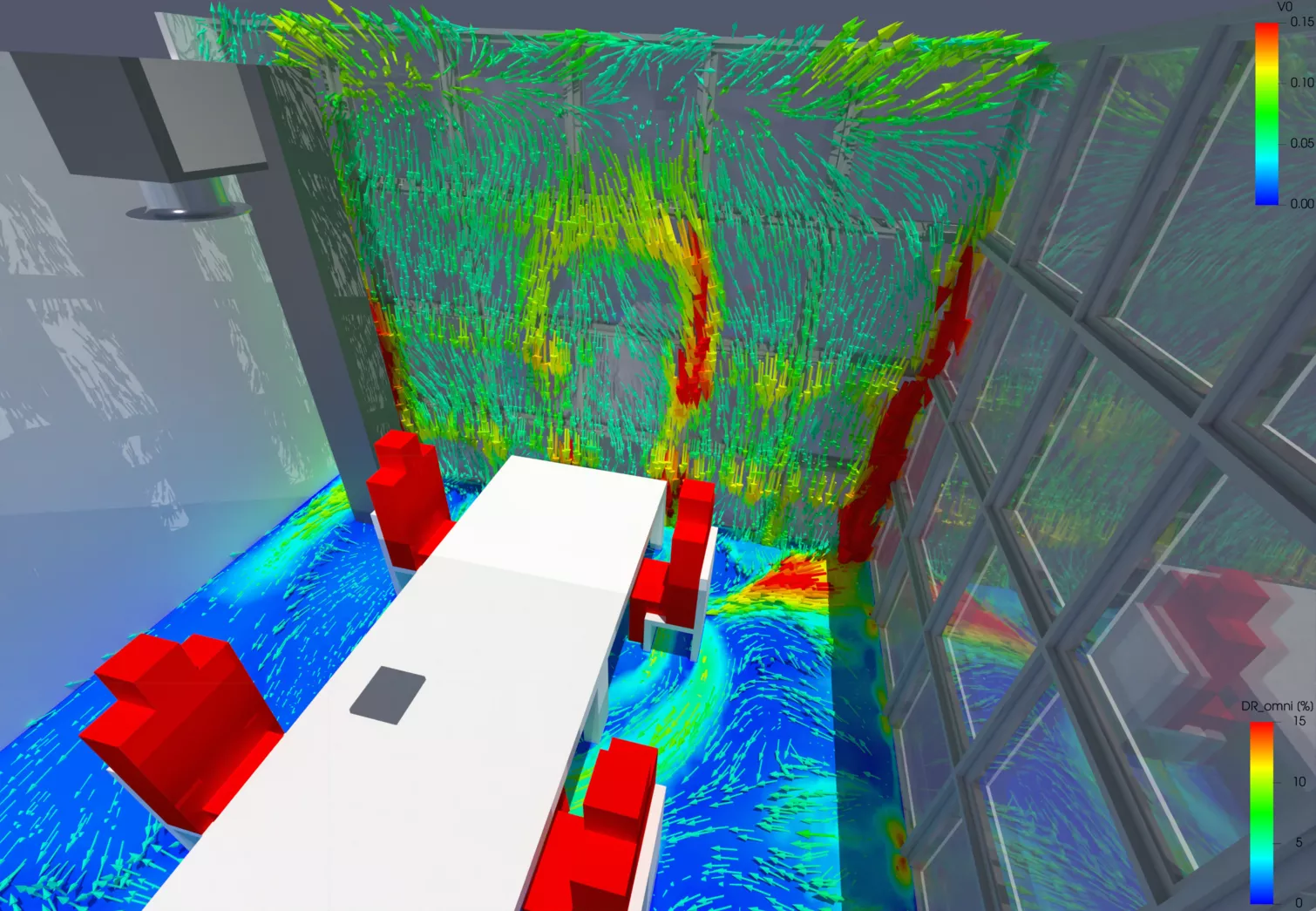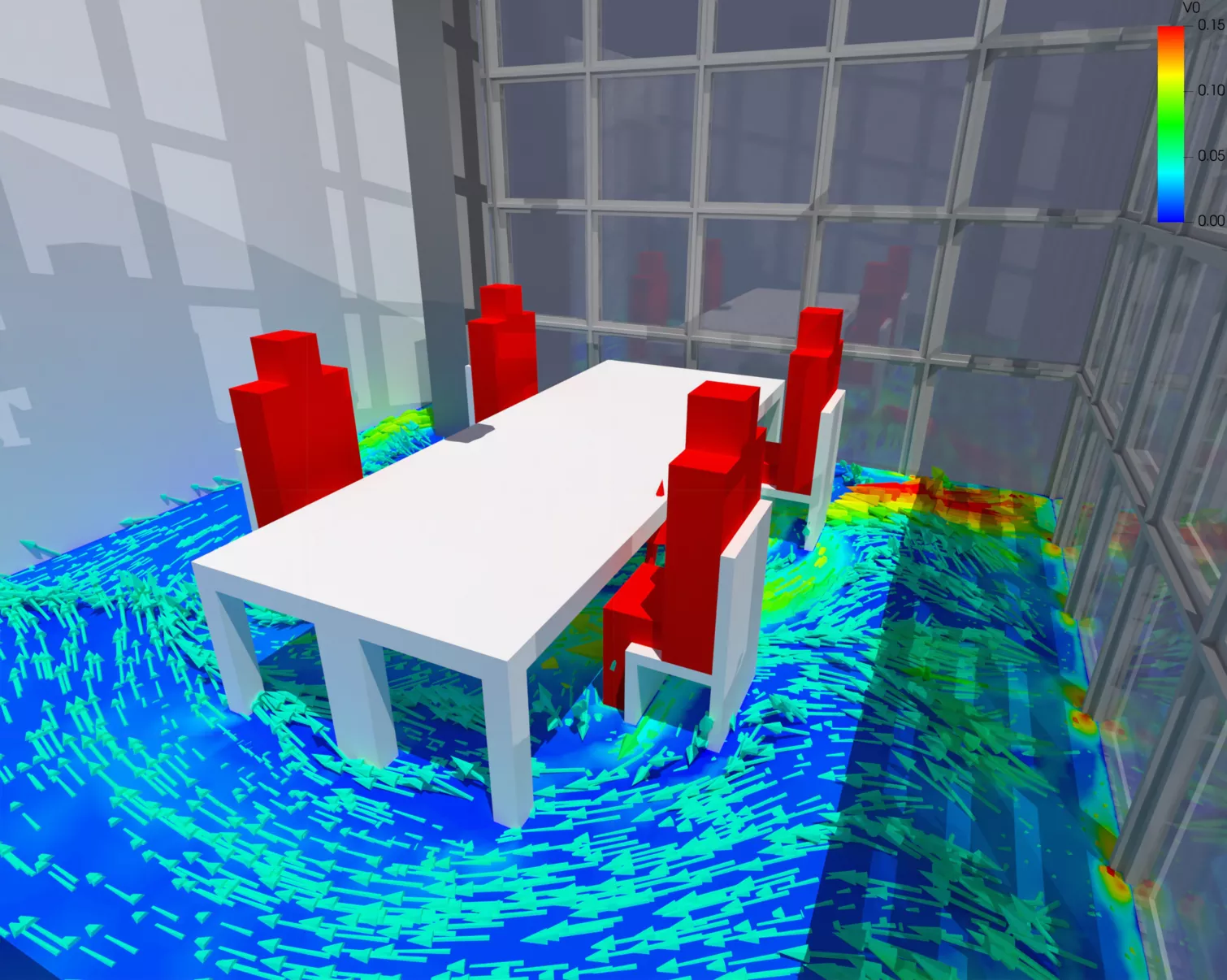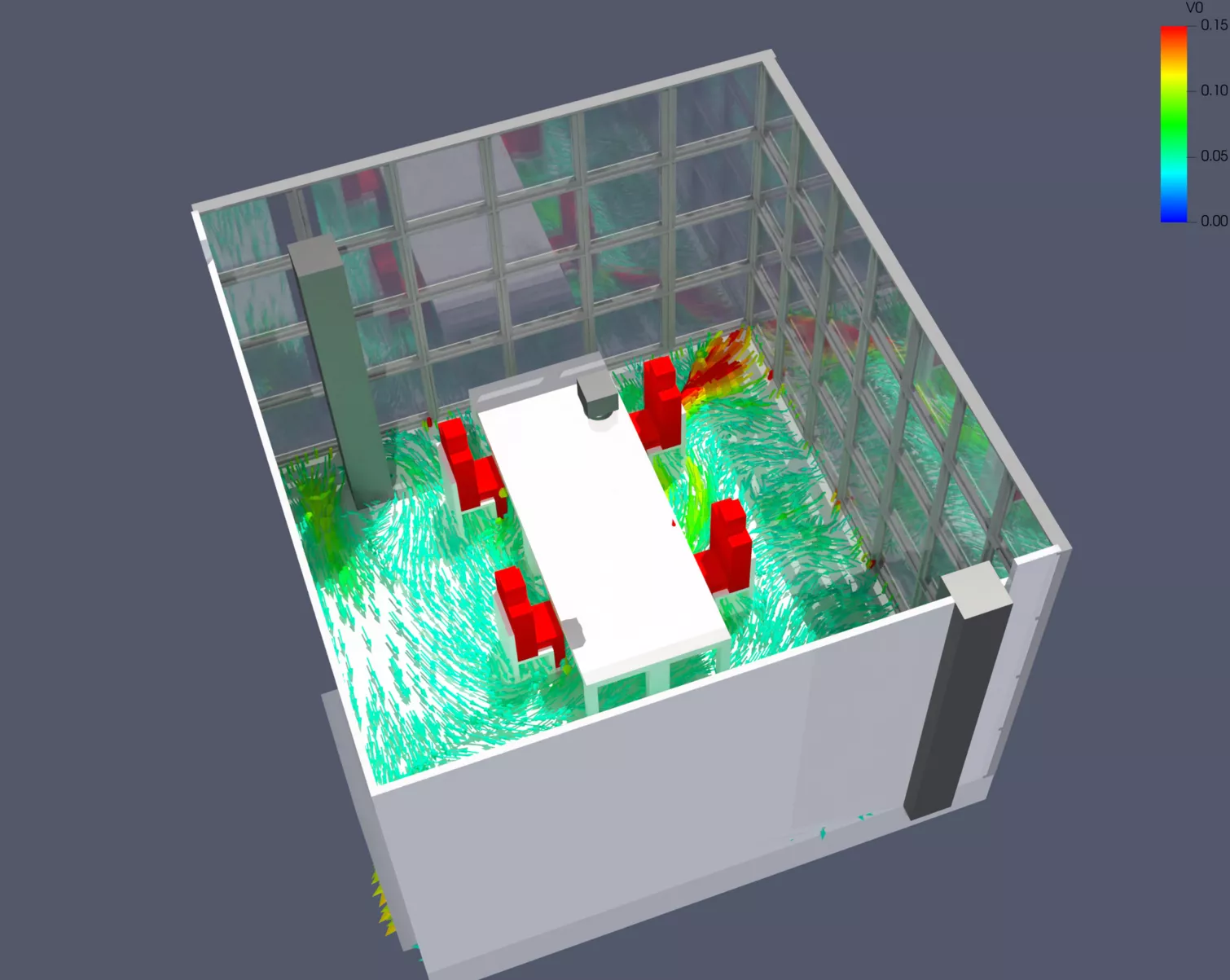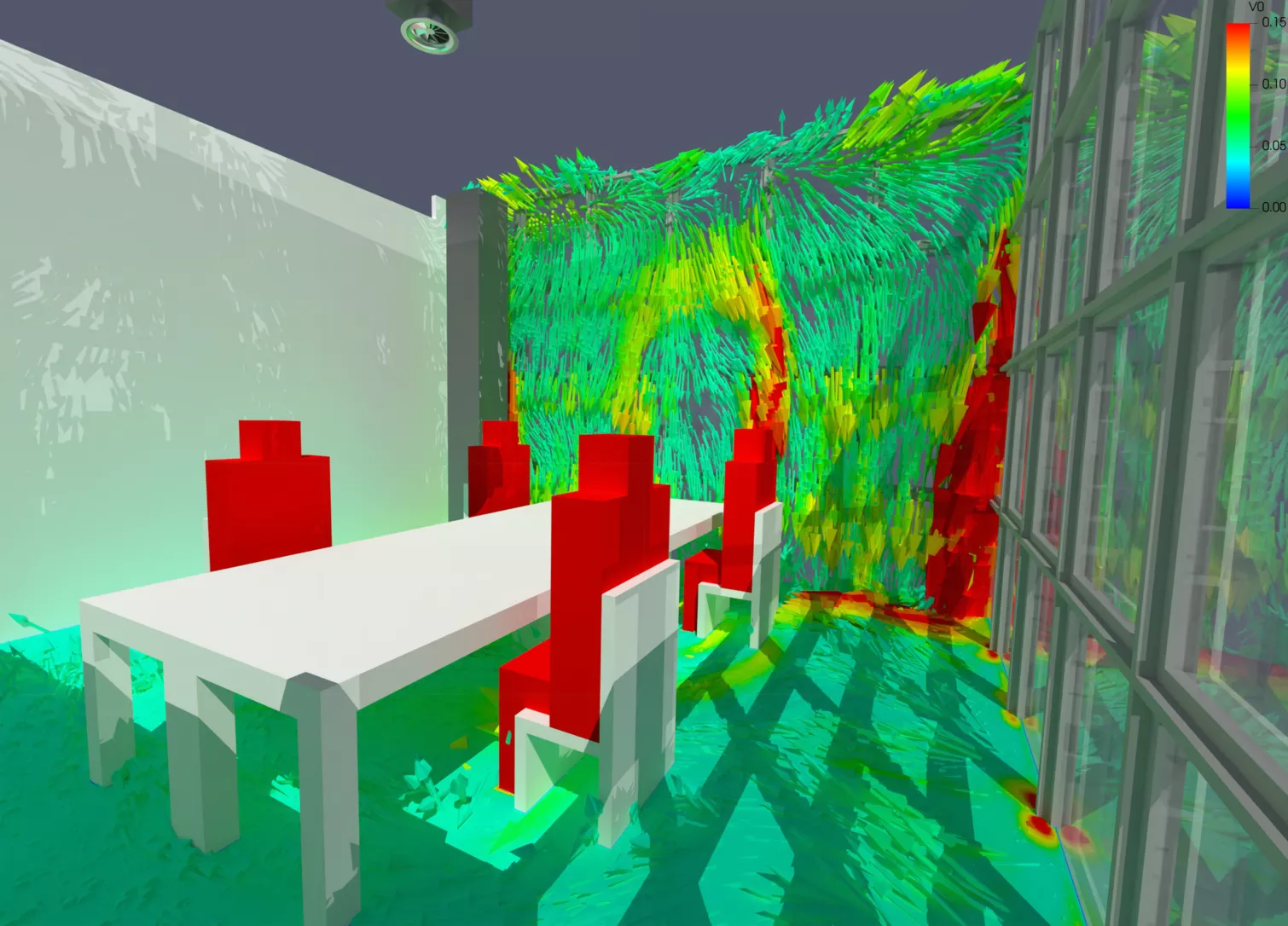Advancing Life Sciences: The New Biomedicine Department at the University of Basel
Pioneering optimal indoor climate control through advanced simulations for the state-of-the-art research facility on the Schällemätteli campus
The new Life Science Campus building on the Schällemätteli site in Basel will provide around 70 research groups with a new and modern workplace in the immediate vicinity of the university hospitals. The new research building offers around 35,000square metres of space, spread over two basement floors and eight upper floors, for around 700 employees and 200 students.
The rooms are air-conditioned with heating and cooling sails as standard, with the exception of the head building. Thermoactive building component systems (TABS) are used in the concrete ceiling there. The feasibility of a rear-ventilated curtain wall was analysed using coupled thermal-energetic simulations and numerical flow simulations. For thermal and visual reasons, a unitised façade was ultimately chosen, of which two different designs and glass variations were investigated with regard to the cold air problem using flow simulations. By optimising the positioning of the supply air for the mechanical ventilation, it was possible to ensure a comfortable indoor climate in winter with the planned U-value of the façade. Overheating in summer was counteracted with electro-chromatic window glass (SageGlass). The flexible adjustment of the g-value eliminates the need for movable solar shading. The step switching of the glass was tested and optimised in a thermal-energetic annual simulation.
The aim of the simulation was to ensure that the dark level of the glass is only active for a few hours a year, while at the same time maintaining comfort and ensuring that there is no increase in the planned cooling capacity. Once the building application had been successfully submitted, a zone-based overall model of the building was created on the basis of the tender planning. The main focus here was on the utilisation with 46 different usage profiles and the planned TABS system. The thermal-energetic simulations made it possible to predict the climatic conditions in the rooms during an operating year. Based on the indoor climate simulations, measures for optimisation could be derived and provided the specialist planning team and the client with planning security and a transparent basis for decision-making.
Added value
- Analysis and optimisation of TABS (thermoactive building component system) and electrochromic glazing
- Review of various façade designs with regard to cold air loss and draughts in winter
- Dynamic cooling capacity calculation incl. optimisation
- Indoor climate analysis of all relevant rooms and utilisation zones
Services
Solar study on electrochromic glass
- The switching levels and the corresponding g-value of the glazing were evaluated by analysing the incident global radiation on each side of the façade, taking into account the local shading.
Cold air drop problem in corner rooms
- Due to the high corner glazed façade, a flow simulation was carried out for the corner offices in the head-end building. This made it possible to identify and correct draughts caused by the ventilation.
Room utilisation profiles at the centre of the simulation
- A total of 46 different room utilisation profiles were taken into account in the simulation model. A clear definition of appliance and lighting waste heat as well as the number of people are crucial for a correct forecast of the room climate, as well as energy and performance indicators.
Thermoactive component systems (TABS)
- In collaboration with the manufacturer, the TABS was integrated into the simulation model and calibrated. The simulations made it possible to analyse the performance of the ceiling on the indoor climate under various scenarios (mass flow, control, flow temperature).
Indoor climate investigation
- Due to the high proportion of façade in the corner office and the limited TABS area available in the ceiling, a high supply temperature is required in winter. This leads to overheating and an uncomfortable indoor climate in the transitional period. The solution was to increase the TABS-activated area and reduce the flow temperature.
Dynamic cooling capacity calculation
- Thermal-energetic simulations can be used to dynamically calculate the design outputs of heating and cooling for various scenarios and occupancy profiles. The effects on the room climate and the room air temperature can also be shown if the output is insufficient.
Architect
- Burckhardt Architektur AG
Processing period
- 2019 - 2023
Services
- Building environmental control, Simulation
- Laboratories, clean rooms, research and educational institutes

